"I'm an Indian Lesbian And This Is My Story"
A real-life account of a woman confronted with a love she didn’t know she could feel, and relationships she didn’t know she could have.

“If you met me, you wouldn’t be able to tell that I’m in a same-sex relationship for the last three years. Quite like a heterosexual couple, we don’t want sexuality to define us. We live together, bicker over big little things, share daily chores and holiday expenses, and sleep in the same bed. It is 2019, after all, and we are not criminals in our country, courtesy of the Supreme Court partially striking down Section 377 last December. The secret life, however, fades in the selective company of friends, colleagues, and family. And we have found liberation in living honestly; should it matter then that our building members know us as ‘family friends’?
If you met us, you would be able to tell that we are practical romantics—levelheaded and reckless in equal measure. A colleague had introduced us, in May 2015, during a coffee round. She didn’t look like a ‘lesbian’, if that’s even a thing, and if that’s what you’re wondering. It was an unlikely script. And it all started with, ‘I love your haircut’.
Coco Chanel once stated, ‘A woman who cuts her hair is about to change her life’. It’s true. I was announcing, without really announcing, ‘moving on’ with the ‘breakup cut’. The let’s-cut-it-all-off-haircut was a statement of personal empowerment, an adieu to an affecting three-year relationship with a Hungarian woman I had fallen madly in love with during my sabbatical in London. My first serious lesbian relationship. I was 35.
Until then I wasn’t pretending to be ‘straight’...I was straight. I had instantly sensed a connection when I met my college sweetheart at 19. It was the ’90s, remember, where tall, dark and handsome, with good manners on the side, made for every girl’s dream man! I was that girl too. We spent every waking moment together for seven years. But there’s no escaping adult career ambitions. A compelling desire to establish my identity didn’t quite work out for our relationship. I started spending more time apart, at my desk and developing networks, and it wasn’t long before we drifted apart. Post heartbreak, work was my rehab, and I didn’t shy away from an odd one-night stand. What a glorious time to be a practicing feminist!
Yet, something was missing. I ached for more, from my life, my work. The adventure began with relocating to London, to study and make new friends, to learn and make mistakes...but to explore sexuality was nowhere in the plot.
I was introduced to a free-spirited Balkan dancer at an English pub at Islington. We got on famously, and among other things, discussed The English Patient. We flirted, and next thing I recall was saying yes to: ‘Can we meet for coffee?’.
In the book of life, is there a chapter on chemistry between two same-sex people, and how does one decode it? I was trailing breadcrumbs—started with rummaging through memories of my past. As a 12-year-old, was my attraction to my best friend’s mother (who looked like Brooke Shields!) sexual? I began questioning my long-term relationship with my boyfriend, my carnal choices, my parents, my girlfriends—it was all too explosive, and coming to terms with it in an alien country, a precarious thought.
For me, sexuality is a private orientation, but it also can’t exist or thrive without permission. The only consent I needed apart from my own, was my parents’. Hesitantly, I asked for recommendations for a therapist, one who would make sense of the ‘shift’. It wasn’t easy offloading my new-found leanings to friends, and doing it in front of a total stranger in the guise of a therapist, unthinkable!
Those tough, sometimes intruding, queries about my sexual history turned my life, as I knew it, upside down. The result of the Kinsey’s scale, also known as the Heterosexual-Homosexual rating scale, revealed 80 percent inclination towards women, 20 percent towards men. A dozen sessions and a grid of questionnaires later, I allowed myself to be okay with my attraction to same-sex. It was quite normal to go on a coffee date.
The Balkan and I lasted for one very trying year. Constant fights were mostly because I was applying the same rules of engagement as I would with a man, and it left behind a significant emotional emptiness.
Absolutely none the wiser, I read everything I could about women’s sexuality, coming-out stories, and desires. I found some comfort at that time hanging out with a British lesbian couple at their home. One of them recommended shows to watch—L Word (intimate drama series about a group of lesbian friends struggling with romance and career in Los Angeles) and Tipping The Velvet (a coming of age story set in 1890s in England, delving into pervasive lesbian theme). Their courage and sureness, so what if it was fictional, in the face of their own uncertain journeys was inspiring enough to take the next step. Come out to my parents.
I sat myself next to my mother. ‘I prefer women to men as my partner,’ I muttered, almost whispering in an apologetic tone, weeping uncontrollably. I could see the colour of her face go from red to pale, as I explained the switch, the delicate difference in lovemaking and companionship, the therapy, and the Kinsey scale. ‘But you’re not entirely gay, the test says...you’re also drawn to men, focus on the small percentage,’ she rebuked, adding that she’d talk to my father. What still resonates with me, however, is how she used very few words to correlate law regulations in India with her fear as a parent. ‘The government doesn’t support your status, how do you expect me to approve?’ she explained calmly. ‘Getting by life as a woman is difficult as is. I can’t imagine how you’d negotiate being a woman and gay in India.’ This was in 2013, when the Supreme Court upheld 377, criminalising homosexual sex.
In some ways, it was the best coming-out encounter I could have hoped for—we both cried, she articulated her concerns and listened to mine, and continues to play the denial card ever so often. I’ve made my peace with their unspoken understanding—they haven’t brought up my marriage, and my Indian partner stays over with me at their home frequently, with the bedroom door locked.
But this wasn’t the case when I was dating my last girlfriend, after the Balkan. Confiding in my parents felt like a tremendous release, my sexuality was not classified information anymore. I wanted to date again, registered on Guardian Soulmates, an online dating site in the UK, and almost immediately met an out-and-proud Hungarian, whose day job as a childcare professional made her altogether enchanting! It was fast-track love. We moved in soon after the exchange of I Love You-s, I’d cook chicken curry and masala omelets for her folks on trips to Budapest, and when I had to move back to Mumbai, she gave up her job and friends in London and hopped on the plane with me. It was all wonderful! We were two openly lesbian grown-ups, living at my own place, hosting friends over, for three months. I didn’t have the nerve to introduce her to my parents, though, a regret that I corrected with my Indian girlfriend.
The Hungarian left for Budapest in April 2014 to take care of her mother who was battling breast cancer, and later to Brighton to do a masters course in sailing—a passion that she had hoped to expand into a full-time job in India. Her mother is doing well now, she has returned to her day job in London, and sails on weekends. Suffice to say, she never took a flight back to Mumbai. She broke up with me over a phone call. I tried to wrap my heart around the whereabouts of the abrupt choice in the context of finding closure. As in, who would have reckoned, right?
But queer love, much like straight, also works in mysterious ways. It’s no exaggeration to say that falling in love again, and with my Indian partner of three years was—and still is—like coming home after years of wandering.”
more from Life
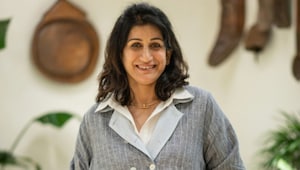
How training for a marathon became the most honest conversation I have ever had with myself

Emily in Paris season 5 is back—and we’re still hate-watching every minute of it

The coolest restaurants across India that deserve to be on your foodie radar
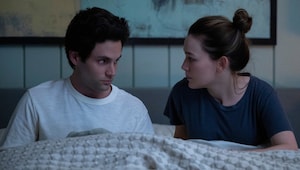
Is 'future faking' the new gaslighting? Decoding this new dating trend
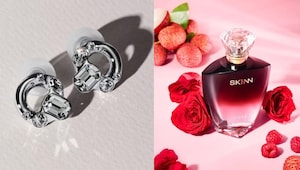
Bad at gifting? Check out these stocking stuffer ideas based on each zodiac sign
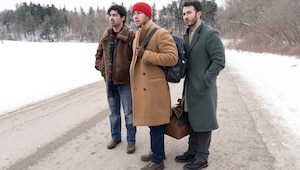
15 new Christmas movies you might want to add to your 2025 holiday watch list
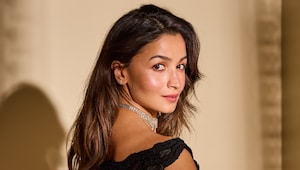
Why glycolic acid is your skin's best friend for the winter season
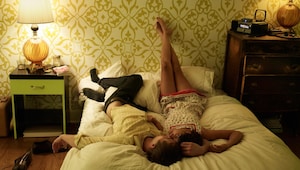
Women have long been having sex on the first date—so why do some of us still feel shamed?

The 'shixie' is a modern take on the 70s shag haircut: 10 style ideas and how to wear the trending look

These are the most Googled dating and relationships questions of 2025—and, er, it’s been an anxious year
